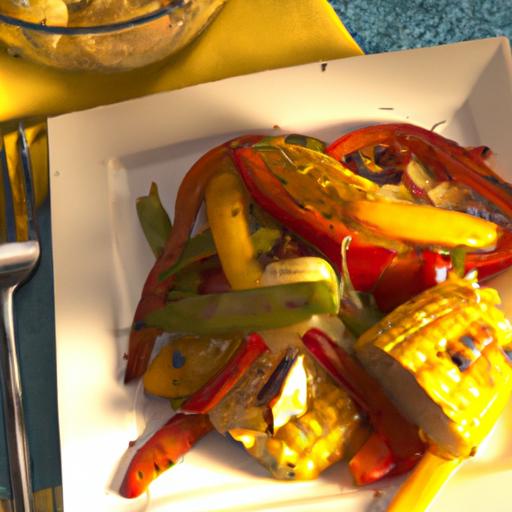In the quiet pulse of early morning, when the earth still clings to dew and the promise of a new season wafts on the breeze, a simple act can spark a profound transformation: planting the first seed in your very own garden. Gateway gardening is more than just a hobby – it’s the doorway to self-sufficiency, a gentle invitation to reconnect with nature’s rhythms and the roots of homestead living. This article opens that gateway, guiding you through easy, approachable recipes that bring the pantry to your doorstep. Whether you dream of a sprawling garden or a modest patch of green, these nurturing steps will help you grow not only plants, but confidence, sustainability, and a deeper sense of place. Welcome to your homestead journey – it begins here, in the soil beneath your hands and the kitchen warmth of fresh, home-grown flavor.
Gateway Gardening Essentials empower first-time homesteaders to transform their outdoor spaces into flourishing edible landscapes. When you cultivate your own plot, the magic of nurturing seedlings into vibrant plants is truly rewarding. Selecting the right starter plants, such as tender greens, versatile herbs, and robust root vegetables, sets the stage for consistent growth. With simple soil preparation techniques, your garden will become a palette of rich earth ready to support lush, healthy crops. To celebrate your homegrown bounty, try this vibrant Garden Fresh Summer Herb & Vegetable Medley recipe-quick to prepare and bursting with flavor.
Prep and Cook Time
- Prep Time: 15 minutes
- Cook Time: 20 minutes
Yield
Serves 4 as a main dish or 6 as a side
Difficulty Level
Easy
Ingredients
- 2 cups freshly harvested cherry tomatoes, halved
- 1 cup garden peas, shelled and blanched
- 1 cup baby zucchini, sliced thinly
- 1 small red onion, finely chopped
- 2 cloves garlic, minced
- 1/4 cup fresh basil leaves, torn
- 1/4 cup fresh parsley, chopped
- 2 tbsp extra virgin olive oil
- 1 tbsp freshly squeezed lemon juice
- Salt and freshly cracked black pepper, to taste
- Optional: 1/4 cup crumbled feta cheese or toasted pine nuts for garnish
Instructions
- Prepare your garden-fresh vegetables: Gently rinse the cherry tomatoes, peas, and baby zucchini under cool water. Pat dry with a kitchen towel to avoid excess moisture.
- Blanch the peas: Boil salted water and add peas for just 2 minutes. Immediately transfer to an ice bath to preserve their bright color and crisp texture.
- Sauté aromatics: In a large skillet, heat the olive oil over medium heat. Add the minced garlic and chopped red onion. Sauté until fragrant and translucent, about 3-4 minutes.
- Add the vegetables: Toss in the cherry tomatoes, blanched peas, and sliced zucchini. Cook gently for another 5-6 minutes, stirring to combine flavors while keeping the vegetables vibrant and slightly crisp.
- Season and finish: Remove from heat. Stir in the fresh basil, parsley, and lemon juice. Season with salt and freshly cracked black pepper to your liking.
- Serve: Transfer the medley to a beautiful serving bowl. Optionally, sprinkle with crumbled feta or toasted pine nuts for added texture and flavor.
Tips for Success
- Plant selection: Choose fast-growing, hardy plants like cherry tomatoes and snap peas for beginner-friendly success.
- Soil prep: Before planting, enrich your soil with compost and maintain good drainage to fuel vibrant growth.
- Harvest timing: Pick vegetables early in the day for peak freshness and flavor.
- Storage: Serve immediately or store leftovers in an airtight container and refrigerate up to 2 days.
- Variations: Swap zucchini for summer squash or add a handful of baby kale for extra greens.
Serving Suggestions
This vibrant vegetable medley shines when served warm alongside a rustic loaf of crusty sourdough bread or over a bed of fluffy quinoa for a complete meal. Garnish the dish with edible flowers or additional herb sprigs for a colorful, garden-inspired presentation that delights the eyes and palate alike.

| Nutrient | Per Serving |
|---|---|
| Calories | 150 kcal |
| Protein | 4 g |
| Carbohydrates | 18 g |
| Fat | 7 g |
Ready to deepen your homesteading skills? Discover more garden planting tips for beginners and visit the Gardening Know How website for expert advice on soil health and plant care.
Q&A
Q&A: Gateway Gardening – Easy Recipes to Start Your Homestead Journey
Q1: What exactly is gateway gardening?
A1: Gateway gardening is like the welcoming front door to the world of homesteading. It’s a simple, beginner-friendly approach to growing your own food that eases you into the joys and skills of self-sufficiency without overwhelming you. Think of it as your green thumb’s very first handshake.
Q2: Why start with gateway gardening before diving into full homesteading?
A2: Starting small with gateway gardening helps build confidence, knowledge, and a connection to your food. It’s a manageable way to understand seasonal rhythms, soil health, and plant needs before scaling up to the bigger homestead projects. Plus, you get to enjoy fresh, homegrown flavors almost immediately!
Q3: What are some easy recipes that complement gateway gardening?
A3: Simple recipes that celebrate the harvest are perfect. For example, a fresh herb butter made with garden basil and chives, a classic tomato-cucumber salad drizzled with your homegrown dill and olive oil, or a quick stir-fry featuring crisp greens and peppers. These dishes highlight your garden’s bounty without complex steps.
Q4: Can anyone start gateway gardening regardless of space or experience?
A4: Absolutely! Whether you have a sprawling backyard or a sunny windowsill, gateway gardening can fit your lifestyle. Container gardening, vertical gardens, or even small raised beds can turn any space into a productive mini homestead. Experience comes with every seed sowed and every sprout nurtured.
Q5: How does gateway gardening contribute to sustainability?
A5: By growing your own food, you reduce reliance on industrial agriculture, slash food miles, and cut down on packaging waste. Gateway gardening promotes biodiversity by encouraging pollinators and enriching soil health, creating a small but meaningful ripple toward a greener planet.
Q6: What are the first plants to grow in a gateway garden?
A6: Choose fast-growing, low-maintenance plants like radishes, lettuce, cherry tomatoes, green beans, and herbs such as basil and mint. These are forgiving for beginners and reward you with quick harvests that keep motivation high.
Q7: How much time does gateway gardening require weekly?
A7: Initial setup might take a few hours, but ongoing care can be as little as 15-30 minutes a day or longer on weekends. It’s about consistent, mindful attention rather than constant labor-perfect for busy folks who want to dip their toes into homesteading.
Q8: What’s the best mindset for a new gateway gardener?
A8: Embrace curiosity, patience, and playfulness. Gardening is part science, part art-it’s okay to make mistakes. Celebrate small victories and view challenges as learning adventures that prepare you for deeper homesteading pursuits.
Q9: How can gateway gardening enrich my cooking and lifestyle?
A9: Fresh garden produce elevates your meals with vibrant flavors and nutrients. The act of growing your food deepens your appreciation for the ingredients and nurtures a mindful lifestyle focused on health, sustainability, and connection to nature.
Q10: What’s the next step after mastering gateway gardening?
A10: Once comfortable, expand your garden with perennial plants, fruit trees, or small livestock like chickens for eggs. Explore preserving techniques such as canning or fermenting to extend your harvest’s shelf life-stepping stones toward a thriving, self-reliant homestead.
Closing Remarks
As you embark on your gateway gardening adventure, remember that every seed sown is a step closer to self-sufficiency and a richer connection with the earth. These easy recipes are more than just meals; they are the foundation of your homestead journey, nurturing both body and soul. So roll up your sleeves, embrace the rhythm of the seasons, and savor the simple joys of homegrown bounty. With patience and passion, your gateway garden will flourish-turning fresh ingredients into stories, sustenance, and a lifestyle rooted in nature’s abundance. Happy gardening, and even happier cooking!


